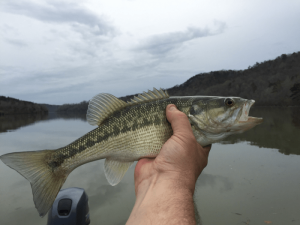Embark on a journey into Eco-Friendly Kayaking and Canoeing, where nature and sustainability converge in a harmonious blend. Learn how to paddle responsibly while exploring the beauty of our waterways.
Discover the positive impact of eco-friendly practices, from choosing the right gear to supporting conservation efforts in eco-tourism destinations. Dive deep into the world of sustainable paddling and make a difference with every stroke.
Introduction to Eco-Friendly Kayaking and Canoeing
When engaging in kayaking and canoeing, it is essential to prioritize eco-friendly practices to minimize the impact on the environment. Sustainable tourism plays a crucial role in ensuring that water-based activities like kayaking and canoeing can be enjoyed responsibly without harming natural ecosystems.
Minimizing Environmental Impact
- Use biodegradable soaps and sunscreens to prevent water pollution.
- Avoid disturbing wildlife and vegetation by keeping a safe distance.
- Dispose of waste properly by carrying out all litter and recycling it when possible.
- Choose eco-friendly gear made from sustainable materials to reduce your carbon footprint.
Benefits of Eco-Friendly Kayaking and Canoeing
Kayaking and canoeing are popular water activities that offer a great way to explore nature and enjoy the outdoors. However, traditional paddling practices can have negative impacts on the environment, such as pollution, disturbance to wildlife, and habitat destruction. Eco-friendly kayaking and canoeing, on the other hand, promote sustainable practices that minimize harm to the environment and offer several benefits.Eco-friendly paddling helps protect the environment by reducing pollution in water bodies, preserving natural habitats, and minimizing disturbance to wildlife.
By using non-toxic materials, practicing proper waste disposal, and respecting wildlife habitats, paddlers can help maintain the ecological balance of rivers, lakes, and oceans.
Positive Effects on the Environment
- Reduced pollution: Eco-friendly paddling minimizes the use of harmful chemicals and materials that can pollute water bodies, preserving water quality and aquatic ecosystems.
- Conservation of habitats: By practicing Leave No Trace principles and respecting natural environments, paddlers can help protect fragile habitats and biodiversity.
- Wildlife preservation: Eco-friendly paddling reduces disturbances to wildlife, allowing animals to thrive without unnecessary stress or harm.
Comparison with Traditional Paddling
- Traditional paddling often involves the use of plastic materials, fuel-powered boats, and improper waste disposal practices, leading to pollution and habitat degradation.
- Eco-friendly paddling, on the other hand, promotes the use of sustainable materials, human-powered vessels, and eco-conscious behaviors that minimize the impact on the environment.
Benefits for Wildlife and Ecosystems
- Healthy ecosystems: Eco-friendly paddling contributes to the overall health of ecosystems by reducing pollution, preserving habitats, and maintaining the balance of natural resources.
- Protected wildlife: By minimizing disturbances and promoting conservation efforts, eco-friendly paddling helps protect vulnerable species and their habitats.
Sustainable Gear and Practices

When it comes to eco-friendly kayaking and canoeing, using sustainable gear and practices is essential to minimize environmental impact. By choosing the right equipment and adopting green practices, you can enjoy your paddling adventures while protecting the natural ecosystems you explore.
Eco-Friendly Gear Options
- Opt for paddles made from recycled materials or sustainably sourced wood to reduce carbon footprint.
- Invest in life jackets and buoyancy aids made from recycled materials to support circular economy principles.
- Choose eco-friendly dry bags and storage containers made from biodegradable materials to avoid plastic pollution.
- Select kayaks and canoes manufactured using sustainable processes and materials, such as recycled plastic or bamboo.
Tips for Reducing Waste and Pollution
- Carry a reusable water bottle and snacks in washable containers to minimize single-use plastic waste.
- Pack out all trash, including food scraps, to keep waterways clean and protect wildlife habitats.
- Avoid using chemical sunscreens and opt for reef-safe alternatives to protect aquatic ecosystems.
- Practice Leave No Trace principles by camping responsibly and respecting natural surroundings during multi-day trips.
Importance of Sustainable Materials
Using sustainable materials for paddling equipment is crucial for reducing the environmental impact of kayaking and canoeing. By selecting gear made from recycled or biodegradable materials, you contribute to conservation efforts and promote a greener approach to outdoor recreation. Additionally, sustainable materials help preserve natural resources, support eco-friendly production methods, and inspire others to embrace environmentally conscious practices in water sports.
Eco-Tourism Destinations for Kayaking and Canoeing
When it comes to eco-tourism destinations for kayaking and canoeing, there are several breathtaking locations around the world that not only offer stunning paddling experiences but also promote conservation efforts through sustainable practices. These destinations are perfect for nature lovers and outdoor enthusiasts looking to explore unique ecosystems while minimizing their environmental impact.
1. Everglades National Park, Florida
Located in Florida, Everglades National Park is a paradise for kayakers and canoers. Paddling through the park’s intricate waterways allows visitors to witness diverse wildlife, including alligators, manatees, and a variety of bird species. The park’s fragile ecosystem is home to rare and endangered species, making it crucial to practice responsible paddling and support conservation efforts in the area.
2. Milford Sound, New Zealand
Milford Sound in New Zealand is a UNESCO World Heritage Site known for its stunning fjords and dramatic landscapes. Kayaking or canoeing through the crystal-clear waters of Milford Sound provides a unique perspective of the area’s towering cliffs, waterfalls, and lush rainforests. Conservation efforts in Milford Sound focus on preserving the pristine environment and protecting the diverse marine life that inhabits the fjord.
3. Baja California, Mexico
Baja California in Mexico is a premier destination for sea kayaking, offering paddlers the opportunity to explore the region’s rugged coastline and vibrant marine life. From paddling alongside dolphins and sea lions to witnessing gray whales during their migration season, Baja California provides a one-of-a-kind experience for eco-conscious adventurers. Conservation initiatives in the area aim to protect the fragile marine ecosystems and promote sustainable tourism practices.
Community Involvement and Conservation

Community involvement plays a crucial role in promoting eco-friendly paddling activities such as kayaking and canoeing. Local communities often take the lead in conservation efforts to protect water bodies and their surrounding ecosystems. Tourists can also actively participate in these initiatives to contribute to environmental preservation while enjoying their paddling adventures.
Local Community Initiatives
Local communities near popular kayaking and canoeing destinations often organize clean-up drives, habitat restoration projects, and educational programs to raise awareness about the importance of conservation. By involving residents and businesses in these efforts, they create a sense of ownership and responsibility towards preserving the natural environment.
Conservation Projects
- River Clean-Up Campaigns: Many organizations partner with local communities to organize regular clean-up campaigns along rivers and lakes where kayaking and canoeing activities take place. These efforts help remove trash and debris, improving water quality and protecting wildlife.
- Habitat Restoration: Conservation projects focused on restoring wetlands, mangroves, and other sensitive ecosystems help create a healthier environment for aquatic species. By supporting these initiatives, paddlers can contribute to the preservation of biodiversity.
- Water Quality Monitoring: Some communities engage in water quality monitoring programs to track pollution levels and identify areas that require intervention. Paddlers can assist in collecting data and reporting any environmental concerns they observe during their trips.
Tourist Participation
When tourists engage in eco-friendly kayaking and canoeing tours, they not only minimize their impact on the environment but also support local conservation projects financially. By choosing operators that prioritize sustainability and conservation, visitors can ensure that their recreational activities contribute to the protection of natural resources.
Safety and Responsible Paddling
When engaging in eco-friendly kayaking and canoeing, it is crucial to prioritize safety and practice responsible paddling techniques to ensure the well-being of both yourself and the environment. Respecting wildlife and natural habitats is essential to preserving the ecosystem and enjoying a harmonious experience on the water.
Safety Measures for Eco-Friendly Kayaking and Canoeing
- Always wear a properly fitted life jacket while paddling to ensure personal safety in case of an accident.
- Check weather conditions before heading out and be prepared for changes in wind or currents.
- Inform someone of your paddling plans, including your route and expected return time, for added safety.
Respecting Wildlife and Natural Habitats
- Avoid approaching wildlife too closely and maintain a safe distance to observe without causing disturbance.
- Do not feed wildlife as it can disrupt their natural behavior and diet, leading to potential harm.
- Stay on designated waterways and avoid paddling through sensitive habitats like seagrass beds or nesting areas.
Tips for Responsible Behavior to Protect the Environment
- Properly dispose of any trash or waste in designated receptacles or carry it out with you to prevent pollution of waterways.
- Avoid using single-use plastics and opt for reusable water bottles and eco-friendly products to reduce plastic waste.
- Respect any regulations or guidelines set forth by local authorities to minimize impact on the environment during your paddling excursions.
Impact of Climate Change on Water-based Activities
Climate change has had a significant impact on water ecosystems, affecting the quality and availability of water for paddling activities such as kayaking and canoeing. Rising temperatures, extreme weather events, and changes in precipitation patterns have altered the natural balance of water bodies, leading to challenges for paddlers worldwide.
Effects of Climate Change on Water-based Activities
- Decreased water levels in rivers and lakes due to droughts, affecting the accessibility and safety of paddling routes.
- Increased frequency and intensity of storms and floods, posing risks to paddlers and causing damage to water ecosystems.
- Changes in water temperature and acidity levels, impacting the biodiversity of aquatic species and ecosystems that paddlers interact with.
Mitigating Climate Change Impact through Eco-Friendly Practices
- Reducing carbon emissions by opting for human-powered paddling activities instead of motorized boats.
- Minimizing waste and pollution by practicing Leave No Trace principles and using biodegradable or reusable gear.
- Supporting conservation efforts and restoration projects to protect water ecosystems and promote sustainability in paddling destinations.
Climate-Resilient Strategies for Sustainable Paddling
- Adopting adaptive gear and techniques to handle changing weather conditions and water levels while paddling.
- Participating in climate research initiatives to contribute valuable data on the impact of climate change on water ecosystems and paddling experiences.
- Engaging in advocacy and education to raise awareness about the importance of climate resilience in sustainable paddling practices.
Outcome Summary
As we conclude our exploration of Eco-Friendly Kayaking and Canoeing, remember that every ripple you make on the water has the power to create a wave of change. Let’s continue to paddle mindfully and protect our precious water ecosystems for generations to come.
Question Bank
How can I minimize my environmental impact while kayaking or canoeing?
Choose reusable gear, avoid single-use plastics, and follow designated water trails to prevent habitat disturbance.
What are some eco-friendly gear options for kayaking and canoeing?
Look for equipment made from recycled materials, such as paddles crafted from sustainable wood or life jackets from recycled plastics.
How do eco-tourism destinations promote conservation efforts?
These destinations often collaborate with local organizations to monitor wildlife, restore habitats, and educate visitors on sustainable practices.
Why is it important to respect wildlife and natural habitats while paddling?
Respecting wildlife preserves their natural behaviors and ensures the long-term health of ecosystems that rely on biodiversity.
How can tourists contribute to environmental preservation through kayaking and canoeing?
By participating in clean-up events, supporting eco-conscious tour operators, and spreading awareness about sustainable paddling practices.





